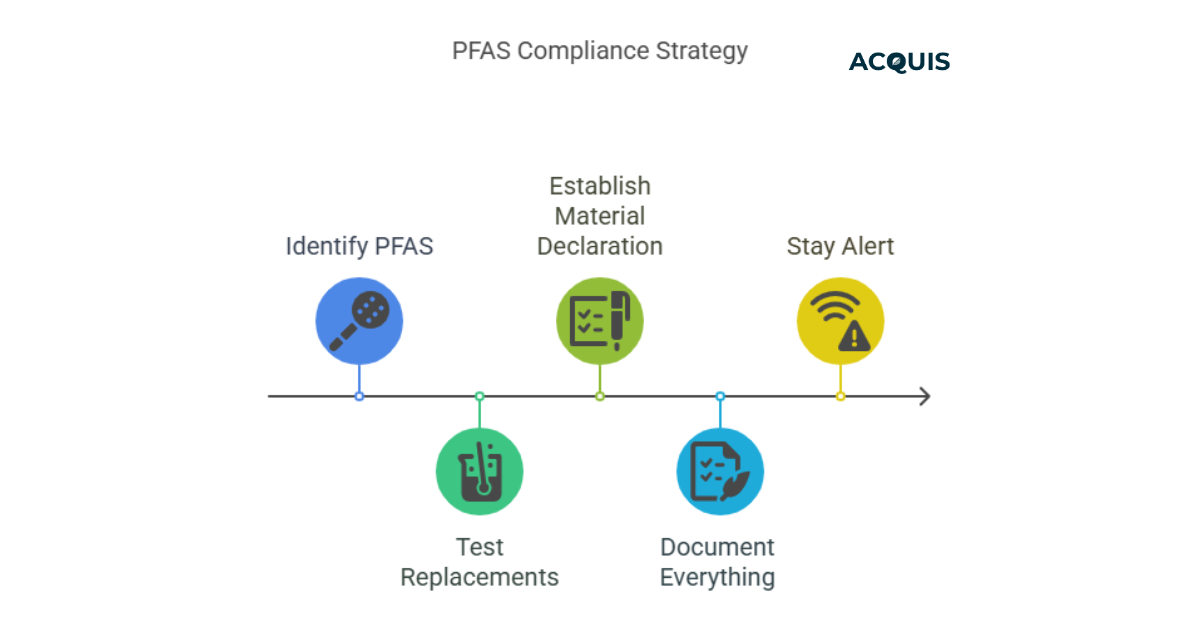Table of Contents
What are PFAS?
PFAS are a group of over 10,000 synthetic chemicals used in manufacturing for their durability, chemical resistance, and water/oil repellency. They are persistent, bioaccumulative, and potentially toxic, which is why regulators worldwide are increasingly restricting their use in medical devices.
PFAS in Medical Devices: What You’re Probably Underestimating
Let’s get one thing straight: PFAS aren’t just a regulatory nuisance they’re a ticking supply chain liability, especially in MedTech.
You rely on them because they work. They’re heat-resistant, chemically tough, and make medical devices safer and more reliable. But the same properties that make PFAS “essential” are also what’s making them public enemy #1 for regulators globally.
What Compliance Teams Should Be Doing (Yesterday)
- Map PFAS use across every product, every component.
- Lock in your ISO 10993 and TSCA 8(a)(7) reporting.
- Don’t just assume exemptions — verify and document.
- If you’re still waiting on supply chain transparency… stop.
- Plan for phase-outs now. Not when the raw material disappears.
Why PFAS Are in Medical Devices (and Why It’s a Problem)
PFAS give you what few materials can: sterilizability, heat resistance, low friction, and longevity. That’s why they’re baked into catheters, pacemakers, surgical packaging, and imaging tech.
Two Types You Should Know:
- Water-Insoluble Fluoropolymers – Big, stable, not a bioaccumulation concern. Think: performance.
- Water-Soluble PFAS – Small, mobile, and on every regulator’s hit list. Think: risk.
Compliance Isn’t Optional — It’s Operational
FDA & ISO Standards
- Devices must withstand sterilization, shipping, storage without failure.
- ISO 10993 is your proof of biocompatibility. Get it right or expect rework.
TSCA Section 8(a)(7)
- The EPA doesn’t care if you use 2g or 200kg. If it’s PFAS, they want to know about it.
- Read More
EU REACH & POPs
- Some PFAS are already SVHCs or POPs. The rest? They’re queued up.
- POPs Full Overview
PFAS Strategy Isn’t Optional Either

-
- Identify It — All of It Know where PFAS are in your devices, coatings, adhesives, cables, and packaging.
-
- Don’t Wait on Substitution If it’s not exempt, it’s at risk. Start testing replacements now.
-
- Supplier Trust Isn’t a Compliance Plan Set up a real material declaration process — upstream and down.
-
- Document Everything If you don’t have records, you don’t have compliance. Log usage, waste handling, exposure data. Centralized and audit-ready.
-
- Stay Alert PFAS laws change like tech trends. Watch federal, state, EU, and NGO updates. Engage early, pivot fast.
Common Mistakes That Blow Up Later
-
Thinking You’re Exempt Being FDA-regulated doesn’t cancel your PFAS obligations. TSCA, state, and EU laws still apply.
-
Confusing Reporting with Permission Maine says you can use PFAS — but you still have to report it. So track it or pay the fine.
-
Banking on Supply Chain Stability 3M’s out. Others will follow. If you haven’t lined up alternatives, you’re already behind.
Protect Your Supply Chain Now
Here’s the checklist your competitors are already working through:
- Map PFAS use across your BOM.
- Push suppliers for disclosure and risk forecasts.
- Run internal audits and product redesign options.
- Document essential use justifications.
If you wait until the law hits — or worse, a product recall — you’re reacting too late.
Acquis Compliance: Your PFAS Risk Control Tower
We help MedTech leaders stop guessing and start leading.
- Data Automation: We track PFAS lists from TSCA, REACH, and beyond.
- Substance ID & Monitoring: Know what’s in your materials and where it’s going.
- Centralized Records: Be audit-ready every time.
- Advanced Reporting: Visualize risk and close gaps fast.
- Consulting & Training: Tailored to your teams and timelines.
- System Integration: No new systems. Just smarter compliance.
PFAS phase-outs are accelerating. Are you ready, or are you hoping? Let Acquis streamline your PFAS compliance so you can stay ahead — and stay in the market.
